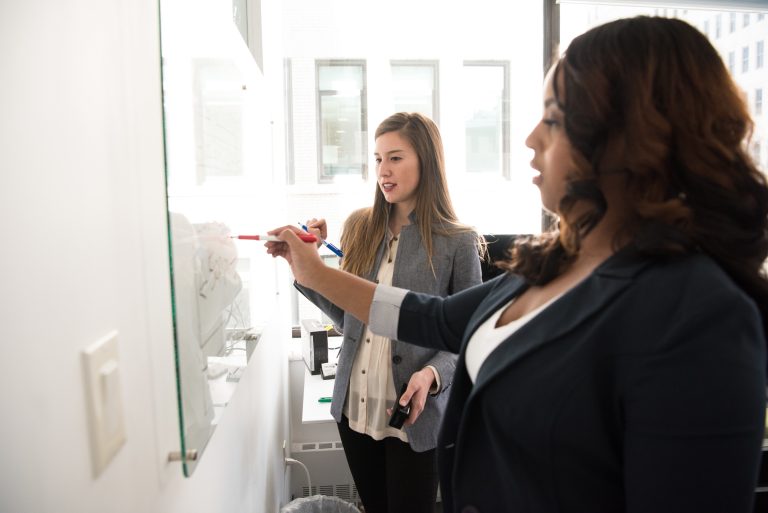Flexibility could trump efficiency in the new normal.
Forced to adopt new ways of working and doing business by the COVID-19 pandemic, companies are applying lessons they have learned to better respond to future challenges.
One of every two chief human resource officers that participated in the Gartner 2021 HR Priorities Survey said that shifting from designing for efficiency to designing for flexibility will have a significant impact on their organizations, according to a blog post on Gartner’s top priorities for HR leaders in 2021.
“Resilience is top of mind for executives today, and it will prove to be a key factor for winning in the 2020s,” Boston Consulting Group wrote in a blog post on the digital path to business resilience. “As the world of business grows increasingly uncertain and volatile, companies that have purposefully developed capabilities to tackle ambiguity and unpredictability — in a word, resilience — are most likely to thrive.”
Boston Consulting Group lists three phases of resilience.
- Respond — Quickly deal with the challenges at hand. With the pandemic, these included keeping employees safe and overcoming key operational issues such as supply chain disruptions.
- Recover — Handle uncertainty at macro and micro levels, like in demand, supply, labor markets, and credit availability.
- Reimagine — Prepare the business for the future, such as by capitalizing on new opportunities caused by permanent shifts in consumer and employee behavior.
Companies may build resiliency in more than one phase at once and take different approaches simultaneously. But the most successful companies will likely blend improvements in technology, work design, and planning.
1) Digital transformation
Boston Consulting Group research shows that three-of-four executives say that digital transformation has become more urgent in light of the COVID-19 crisis and that 65% plan to increase their investments in digital transformation. “As almost every organization’s dependence on digital technologies grows, it is hardly an exaggeration to say that adopting and managing digital technologies will be critical to business resilience,” the firm wrote.
Boston Consulting Group offers a three-step approach to developing digital resilience.
- Address imperatives to respond and recover.
- Reimagine the future and set ambitions.
- Build a sustainable advantage.
A ZDNet article on spotting the winners and losers in 2020 noted, “When the business world collided with the COVID pandemic in 2020, digital transformation — much discussed and variably implemented in preceding years — came sharply into focus. It might be expected that more digitally mature companies — making widespread use of cloud apps and services, with a flexible and mobile workforce, good online customer experiences, and mastery of data and analytics — would be better equipped to cope with the crisis, and recent surveys bear this out.”
2) Work design
The rigid processes and standardization that served companies well before the pandemic have since become liabilities. “What we’ve seen is that during this time of unprecedented change, this efficiency has actually become fragility and has made organizations vulnerable to dealing with change,” wrote Gartner in a blog post on building organizational resilience for today and tomorrow.
HR leaders now ask themselves questions like, “How can we redesign processes and structures to adapt better to disruption?” As of now, less than 20% of employees can change direction in response to changing client needs and priorities, HR leaders told Gartner researchers.
“This is a clear problem, especially today, where priorities change as clients change, as just everything changes,” Gartner wrote. Work “friction” accounts for two-thirds of the unrealized workforce responsiveness, it says.
Organizations are trying to help employees be responsive by eliminating friction and designing work so that they can immediately sense and respond to changes as they occur. In doing so, HR leaders have identified four primary kinds of work friction as well as ways to overcome them, Gartner says.
- Misaligned work design — Shift from episodic overhauls to ongoing adjustments.
- Overwhelmed teams — Focus on prioritized effort instead of maximum capacity.
- Rigid processes — Move from stability to mobility.
- Trapped resources — Switch from standardization in which the default is “no” to variation which starts with “go.”
Redesigning work for responsiveness in such ways produces quantifiable results. Responsive teams are at least 20% more likely to over perform against key goals like customer satisfaction, profit, productivity, and innovation, Gartner says.
3) Active planning
Static planning is also becoming a relic from the pre-pandemic normal. Companies can no longer periodically plan based on their predicted future.
“Being able to adapt quickly regardless of events outside of your control is now a critical requirement,” Workday executive Mark Judd wrote in an article about driving agility in HR to plan for an uncertain future for theHRDirector. “An active approach to planning, which is collaborative, comprehensive, and continuous” is best, Judd says.
“This mindset allows teams to look beyond the HR silo, pulling in real-time operational data from enterprise systems and across departments to make better, data-driven decisions quickly and respond to a constantly changing business landscape,” Judd wrote.
Judd lists three essential steps for active planning.
- Assess the current scenario.
- Get organizational alignment.
- Expand across the business.
“Once active planning is in place, you’ll be able to spend less time trying to predict the unpredictable,” Judd wrote. “Instead, it will allow you to focus your efforts in making the best decisions to keep staff engaged and productive as the company moves towards not only recovering but thriving beyond COVID-19.”
If the only constant is change, then the companies who are most prepared for the uncertainty that the post-pandemic normal presents are also the best positioned for success. So, forget about efficiency and consider flexibility instead. The leading organizations of tomorrow are likely building resilience by changing their technology, work design, and planning today.
Providence Technology Solutions helps organizations improve the efficiency and effectiveness of their HR functions by aligning technology and processes with their business needs. Learn how we could help your organization improve your employee experience through our HCM Consulting services.
Contact us today to discuss your needs online, by email at info@theptsteam.com or by calling 904.719.8264.










